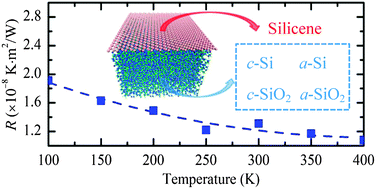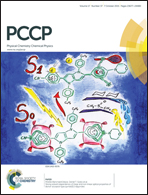Molecular dynamics study of interfacial thermal transport between silicene and substrates
Abstract
In this work, the interfacial thermal transport across silicene and various substrates, i.e., crystalline silicon (c-Si), amorphous silicon (a-Si), crystalline silica (c-SiO2) and amorphous silica (a-SiO2) are explored by classical molecular dynamics (MD) simulations. A transient pulsed heating technique is applied in this work to characterize the interfacial thermal resistance in all hybrid systems. It is reported that the interfacial thermal resistances between silicene and all substrates decrease nearly 40% with temperature from 100 K to 400 K, which is due to the enhanced phonon couplings from the anharmonicity effect. Analysis of phonon power spectra of all systems is performed to interpret simulation results. Contradictory to the traditional thought that amorphous structures tend to have poor thermal transport capabilities due to the disordered atomic configurations, it is calculated that amorphous silicon and silica substrates facilitate the interfacial thermal transport compared with their crystalline structures. Besides, the coupling effect from substrates can improve the interface thermal transport up to 43.5% for coupling strengths χ from 1.0 to 2.0. Our results provide fundamental knowledge and rational guidelines for the design and development of the next-generation silicene-based nanoelectronics and thermal interface materials.


 Please wait while we load your content...
Please wait while we load your content...